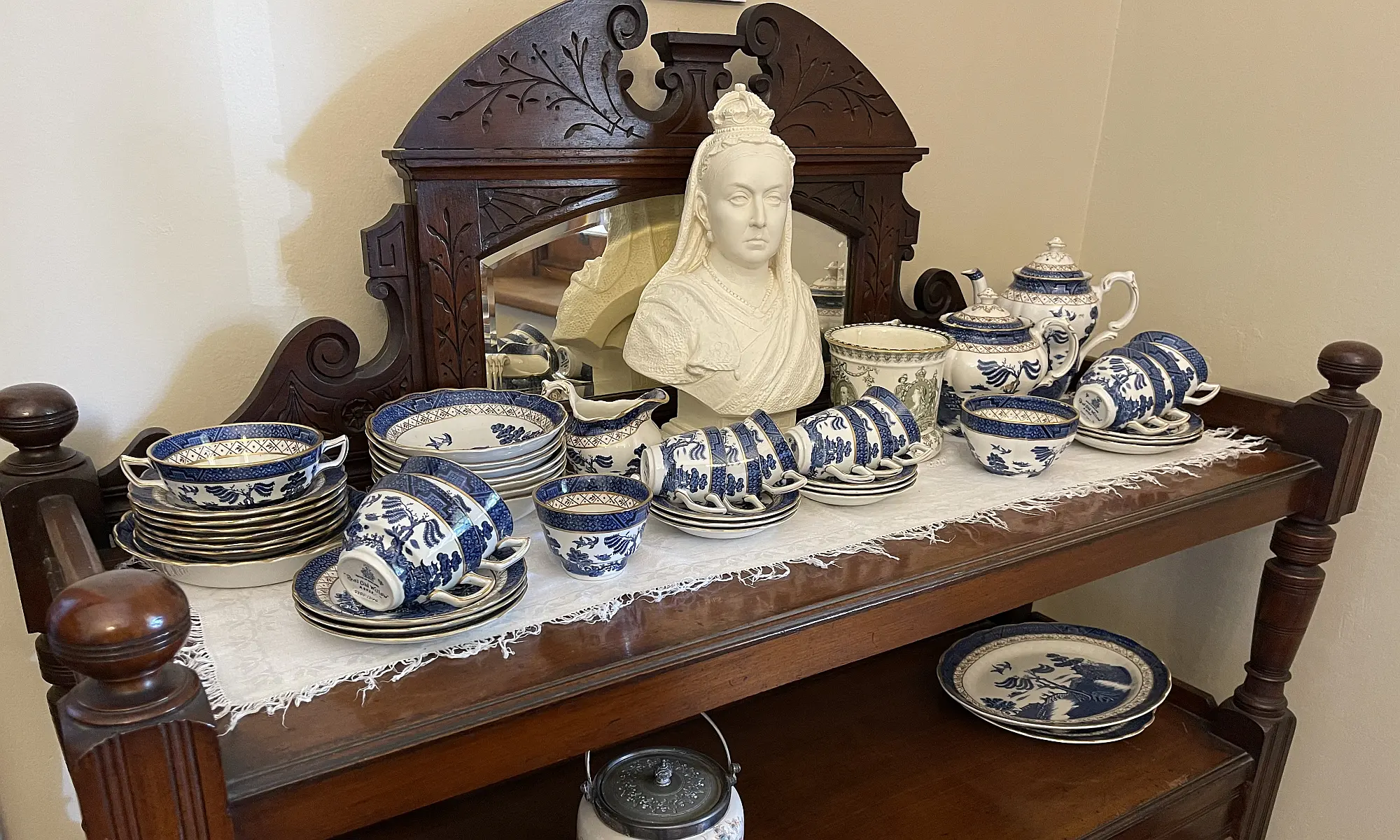by Vincent Saunders
Standing on one of the more dominant sites on the Forest Road ridge is St. Francis Xavier Catholic Church at Arncliffe.
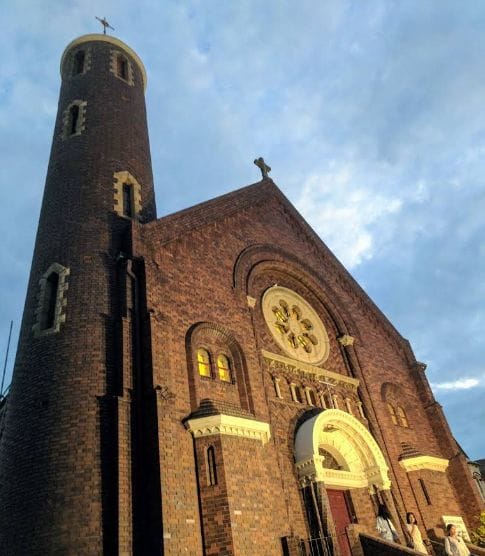
The Romanesque church and particularly its Round Tower may be observed, in all their splendour, at almost any vantage point within and even well beyond the immediate District.
In making their observation how many people realise that the Arncliffe Church was one of the first two places of worship to be constructed in Australia incorporating in its structure the architectural form of the Round Towers of Ireland — edifices long famous in the popular imagination in their association with the predatory raids of the Vikings in the days of yore.
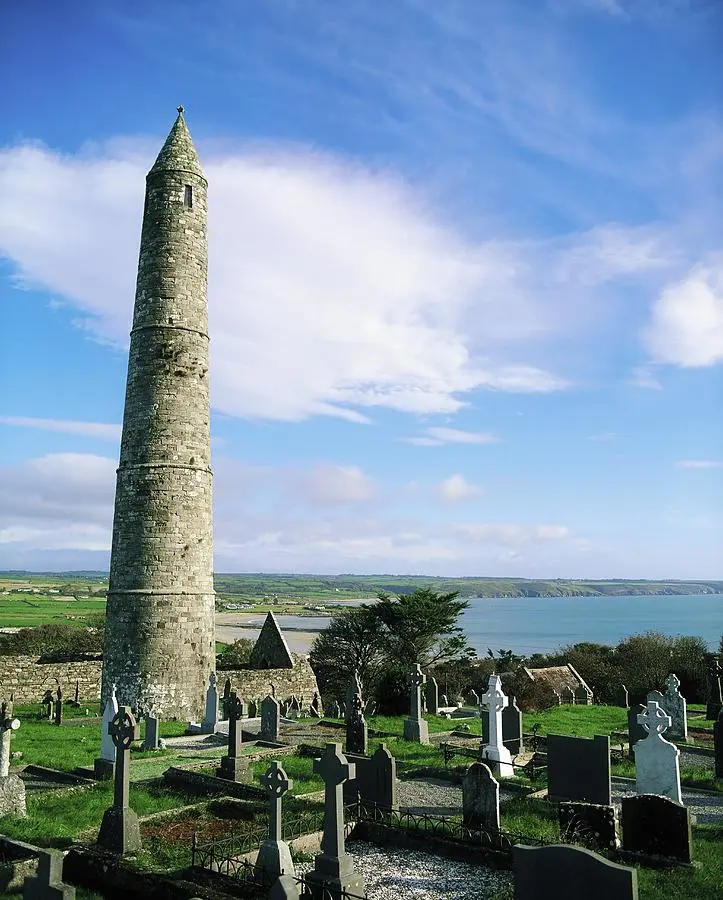
St. Francis Xavier Church was opened for worship in 1931 during the sojourn of the late Monsignor Joseph Patrick Rafferty whose inspiration it was that led to an intensive study being made by his architect (Clement Glancey) of the more famous of the Irish Round Towers at Waterford, Antrim, Cork, Lough Erne, Kilkenny, Tipperary, and Glendalough.
It stands to this day as Sydney’s only church combining in its structure a Round Tower and one of the few extant in Australia with this unusual feature.
Unique Monuments in the West
Although not so well known in this country as in Continental Europe, the Round Towers of Ireland have long been famous and supplied a theme for discussion to Antiquarians regarding their origin and uses to almost as great a degree as have the Pyramids of Egypt.
With the exception of a few Round Towers in Scotland, these unusual stone edifices are to be found in no other part of Western civilisation than Ireland. About 120 of these towers are known to have existed there, 90 still remain in varying stages of decay with about 20 of them more or less perfect to the very coping stone of the roof.
They are located in various parts of the Emerald Isle, some existing in isolation whilst others are associated but detached from churches or other ecclesiastical erections.
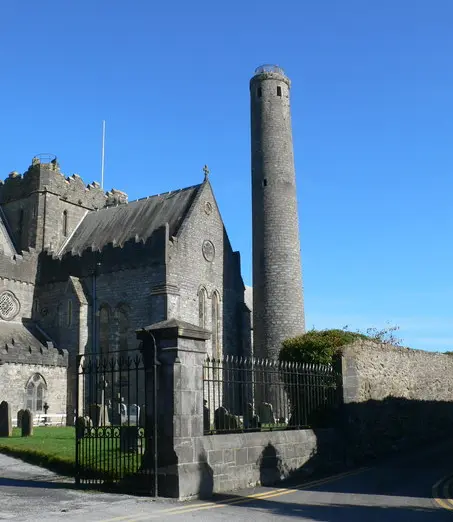
The Round Towers are hollow stone cylinders, narrowing as they approach the summit, and are from 12 to 18 metres in circumference at the base, from 15 to 45 metres in height and divided internally into six or more stories.
The top storey has from three to six apertures whilst the others are each lit by a single aperture with the exception of the lowest storey, above which there is a door elevated from 2 to 9 metres above ground level (the high elevation of the doors led some to believe that this indicated the towers were designed for security purposes).
The Round Towers were used in Christian times (from the 5th century) as places of security where the church valuables could be deposited and where the monks could find refuge in times of peril or alarm.
On critical occasions also their higher apartments were probably lit up as beacons to guide the movements of friends or were used as Watch-towers to observe the tribes in the neighbourhood.
The Viking Raids
The finest hour of the Round Towers in Christian times came with their use during the predatory expeditions of the Vikings (who terrorised the inhabitants also of Scotland, England, and France and sailed the seas in vessels, for the era, of considerable size) or Ireland from the year 749 AD until they settled there about the year 850.
Before sufficient force could be collected to resist the raids of the Vikings, great havoc was inflicted on monastic establishments, the pirates taking whatever booty was at hand when they hurriedly returned to their ships.
Whilst the Round Towers were utilised as places of security during the troublesome times in the early Christian era, it is not so evident that such was their original destination.
A mythological tale describes the remnants of a civilisation of the pre-Christian era as the result of the Tuatha Dé Danann (Gaelic: “People of the Goddess Danu”), a Celtic race inhabiting Ireland before the Milesians (mythological ancestors of the modern Irish) settled in Ireland.
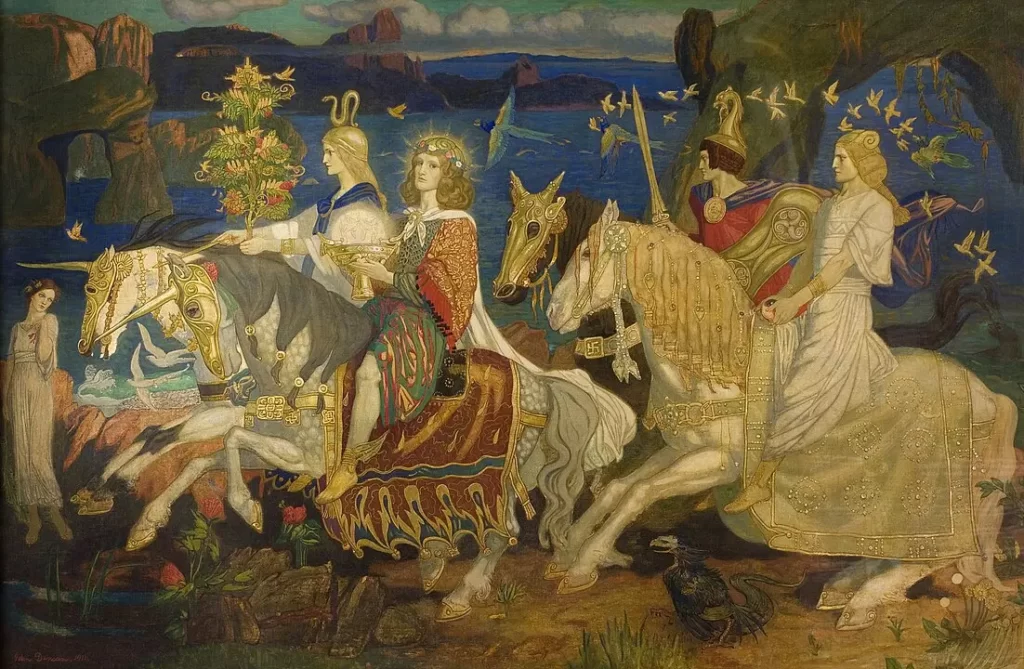
It is alleged by those who contend for their Christian origin, that they were all at one period associated with churches or other ecclesiastical erections and established mainly as places of security and as Watch-towers.
Origin of Round Towers
The famous 19th century Irish poet, Thomas Moore, representing the majority view of Antiquarians on the pre-Christian origin of the Round Towers, wrote in The History of Ireland that their inspiration found its way to Ireland from Persian sources, a few towers bearing an exact resemblance to the Irish towers having been found at Baghdad, Iraq and Bhagalpur, India and that these were thought, in India, to have belonged to a form of worship not extinct and even forgotten. The Round Towers have not been found in any other part of Christendom.
It is also contended that the Towers had probably been fire-temples in which a sacred fire was kindled in connection with certain rites known to be practised by the Magi (Zoroastrianism) in an elevated position (accounting for the high elevation of the doors); and that the top storey (with its numerous apertures) was designed for astronomical observations — for determining the equinoctial and solstitial times.
Yet another hypotheses exists respecting the origin and purposes of these structures. By some the uses to which they were destined have been thought similar to that of the turrets in the neighbourhood of Turkish mosques, and from their summits, it is supposed, proclamation was made of new moons and approaching religious festivities. A kind of trumpet, which has been dug up in the neighbourhood of some of these towers, having a large mouth-hole in the side, is conjectured to have been used to assist the voice in these announcements to the people.
Archaeological researches since Thomas Moore wrote his views in The History of Ireland (1841) seems to have confirmed the pre-Christian origin of the Round Towers. In 1947, an inscription was dug up at Karatepe, a Late Hittite fortress city in southern Turkey indicating that the Tuatha Dé Danann (previously mentioned) had occupied this area for some centuries (prior to migrating to Ireland).
Karatepe was only a short distance away from Hierapolis (North Syria) where Lucian of Samosata, an early Roman historian in his travel-book, On the Syrian Goddess, tells us, was the site of a famous pre-Christian temple, which was the principal source of the city’s wealth. “For much money comes to them from Arabia and from the Phoenicians, and the Babylonians; the Cilicians too — nowhere else among mankind are there so many festivities and sacred assemblies”
Lucian further tells us that at the main entrance of the main temple there stood two pillars, 55 metres high, on top of one of which a man spends an entire week twice every year (he climbed to the top of the pillar by means of a chain and offered prayers for those who brought him gold and silver). Lucian calls them “the phalli which Dionysus erected”.
The twin entrance pillars found in the temples of so many early cults, including Solomon’s temple itself, doubtless had some phallic significance and according to mythology the religious customs of the restricted area of the pre-Christian Mediterranean world were absorbed by the Tuatha Dé Danann and imported to Ireland.
The phallic pillar was, in due course, taken over by the Persian followers of Zoroaster (about the 4th century BC) and the Round Towers found at Baghdad (Iraq) and Bhagalpur (India) previously mentioned, incorporating the place of the ‘sacred fire’ and the astronomical observatory, appears to have had, as religious monuments, a short-lived popularity only as very few of this type have been discovered in the East and none in Western Christendom (with the exception of Ireland).
Nevertheless their inspiration apparently found its way to Ireland and these unusual edifices came into existence all over the Emerald Isle as manifestations of a now obscure form of worship of which the Round Towers remain the solitary and enduring monuments.
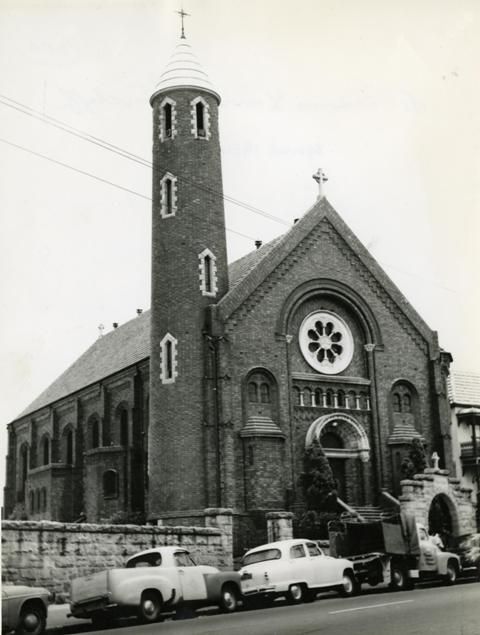
Whatever the origin of the Round Towers they played a part in the spread of Christianity in Ireland and, besides being used as keeps and watch-towers in times of peril or alarm, many of them were used, in more settled times as Bell-towers whence the monastic bell summoned the populace to the house of God.
Meanwhile on the local scene the Round Tower on Arncliffe Hill will serve to remind us and be a source of local pride as a rare representation of a unique style of ecclesiastical architecture in Australia and also regarding the fascinating historical associations of the Round Towers of Ireland whose history has been lost in the night of time.
This article was first published in the June 1966 edition of our magazine.
Browse the magazine archive.
Unless noted, images courtesy of the Bayside Library Service Local History Collection.
